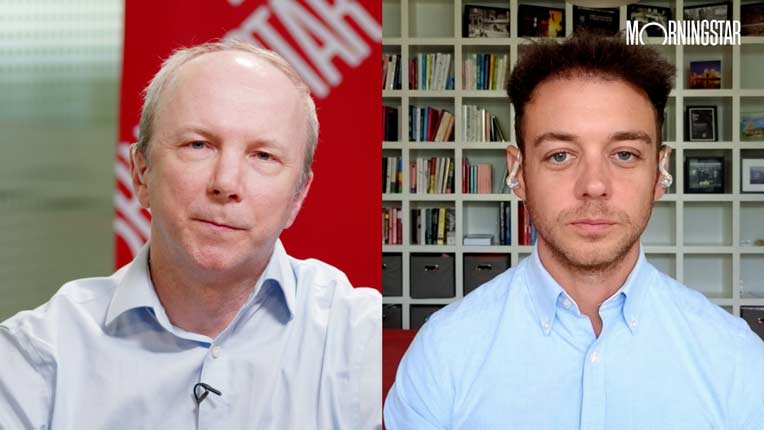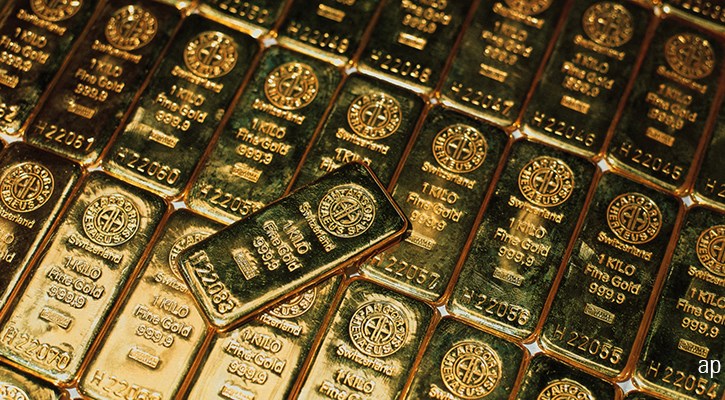
On the surface, gold has had a dreadful year. Looking at the price of the precious metal in US dollar terms – the currency it is usually denominated in – it is down 5% year-to-date to trade at $1,236 currently.
However, the reason for that weakness has very much been strength in the US dollar and continued rising interest rates in the United States. When you look at the gold price in both sterling and euro terms, it is flat on the year.
Rising equity prices haven’t helped, either, of course. Managed money continues to be as short gold as it has ever been. If equities are strong and you’re trying to run money on a quarterly returns basis for clients, you don’t really need gold, says Adrian Ash, at Bullionvault.
But there’s a strong case to be made for allocating part of an investors’ portfolio to gold looking ahead into 2019.
While some expect the Federal Reserve to keep ticking rates higher, many now see two rate rises in 2019 before a pause. With US growth expected to slow through the course of the year, the currency could reverse course, too.
Gold as a Hedge
Freddie Lait, manager of the Latitude Horizon fund, agrees. His fund has gone from having 5% of the portfolio in gold in July to 10% today. For sterling investors, gold has had "an incredible negative correlation" with global equity markets for the past year or so, he notes.
"I'm not a gold bug, but from time to time it makes a huge amount of sense," he says. "Right now, it's probably the best hedge we can find."
And for UK investors, Ash says the risks are so heightened, investors should be looking for some protection. “The risks are pretty obvious and the danger is everyone agrees the risks are obvious and discounts it,” he says.
Aside from the obvious risk of a hard Brexit, Jeremy Corbyn, seemingly, waits in the wings for the Conservative Government to fall – whether that be before or after the current date of the next general election in 2022.
Currently, adds Ash, markets are neither pricing in a bad Brexit nor the potential for a Corbyn Government, whether that be before, during, or after said bad Brexit.
“If you think you can go to bed on 28th March having taken zero insurance, then great. But I think there’s a serious risk of that being very complacent, almost as complacent as the markets were going into June 23, 2016.
“Obviously there’s a risk to gold if it all goes tickety-boo; that was also the risk going into the referendum. Gold and sterling had been a great trade in the first six months of 2016 and there was definite downside if the referendum went with remain.”
He notes that BullionVault has seen a recent uptick in allocations to gold by family offices and high-net-worth investors looking for a hedge. “Larger investors are anxious.”
And, despite global money managers shunning gold, Ash says we’ve not seen large outflows from those who have allocations to it. Those investors with long positions are comfortable with it.
“This year has put to bed my fears that I’ve had over the years that retail investors might turn tail out of gold as well on a price rise,” he explains.
The fear was that a rise to $1,400 would see retail investors selling out. That’s because many would have bought around that price in 2011-13 and have seen negative returns since.
“You’ve got people who got in at that level and have been under water for those six or seven years since. You could say that if you’ve bought gold in 2011/2012 it’s become a forever investment because it’s done so badly.
“But people have seen it go up and down in opposition to other things, so it’s kind of been doing its job. This year it’s done its job; if anything it’s done very well.”
What About Silver?
Silver is currently trading at around three-year lows, having fallen 15% in 2018. This means the gold-silver ratio, at around 85 times, is the highest it has been in 25 years. It reached 100 times in the early 1990s, but that was a historical anomaly, says Ash.
But Ash does not think that necessarily means silver is cheap. “I’m agnostic on the gold-silver ratio. Just because it’s at 85, doesn’t mean it has to go lower. And it might go lower because gold falls faster than silver; it doesn’t mean silver’s going to go up.”
Unlike gold, silver is primarily an industrial metal and, at the moment, Ash thinks that an industrial story that would re-rate the silver price is lacking. Platinum has the same problem, “with bells on”. That’s because platinum’s biggest use is in diesel cars.
“Now, there’s lots of good reasons to think that the diesel story is way overdone and there’s very good reasons to think that the battery electric vehicle story is way overdone,” says Ash. Still, demand for diesel cars is collapsing right now.
That story has served to boost palladium, which earlier this week became the most valuable precious metal, rising to a higher price than gold for the first time. That’s because palladium is used in catalytic converters for petrol cars, which are likely to mop up demand from those deserting diesel.
With palladium now trading at a huge $350 premium to the platinum price, Ash reckons the latter could now be very much undervalued. That said, he also thought that 12 months and two years ago.
“It’s easy to say here’s a great story about platinum – it’s horribly undervalued and the long-term outlook is much better than people think – but it could be quite a long time yet.”
While 10 to 20 years is a long time to hold a position in a metal, “if you’re really looking for a story about a contrarian opportunity, platinum would be it”.





























